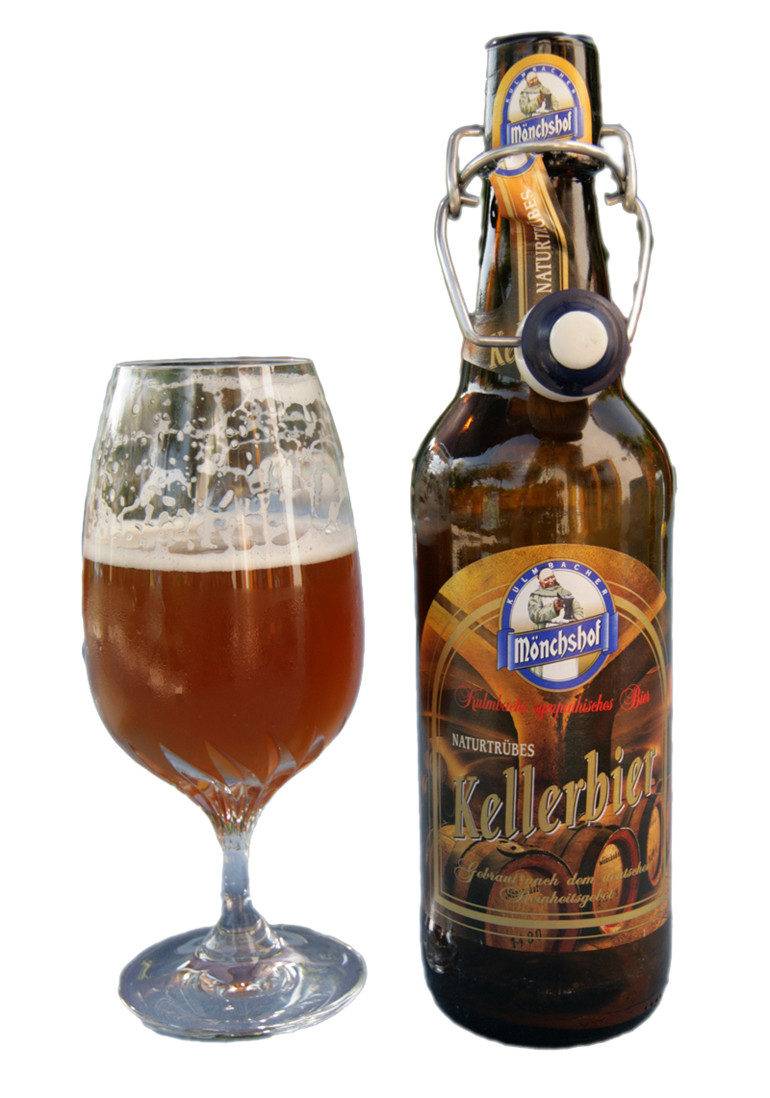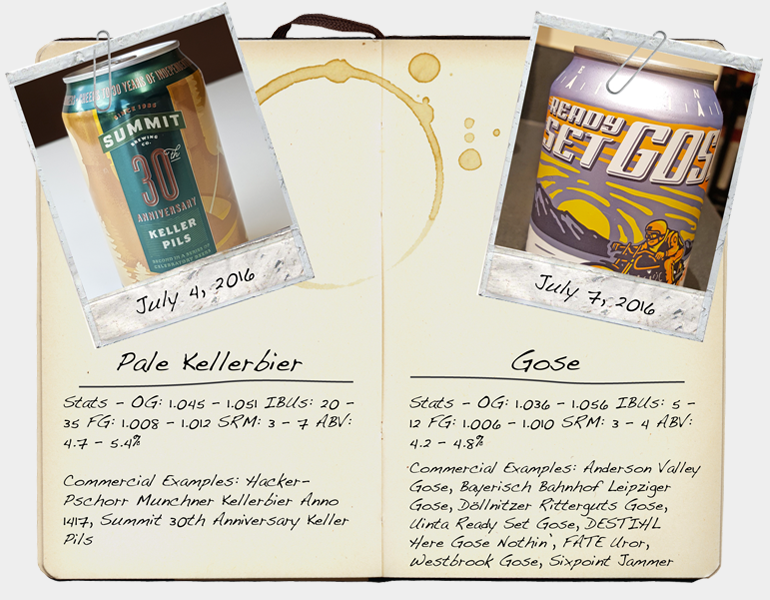Start 14-Day Trial Subscription
*No credit card required

Kellerbier and Gose
Kellerbier
When you think of a lager, you’ll generally think of an exceedingly mild, crisp and clear beer. However, there’s a style of lager that kicks these expectations right out of the mash. Kellerbiers are typically unfiltered, unpasteurized lagers born of deep German tradition – the name translates directly to “cellar beer,” as the beer would be served fresh directly from the lagering cellars or caves beneath breweries.
Were the beer lagered further, it would likely become a Munich Helles or Marzen, depending on the malt bill. Today, the BJCP delineates these sub-styles as Pale and Amber Kellerbier.

As with most lagers, the alcohol range is mild, varying from 4.7% to 5.4% ABV, though characteristics such as color and mouthfeel vary depending on the base style. Compared to the average lager, kellerbiers can be expected to have a slightly creamier texture due to yeast character, which also manifests itself in inoffensive flavor notes of sulfur and diacetyl. The latter can also contribute to a slicker mouthfeel, and the mild level of attenuation also creates a softer, more gently carbonated beer.
Flavor profiles vary with base style, but benchmarks include a grainy, sweet and lightly malty base with low to moderate Noble hop presence, combining for a finish that, while crisp, dry and sometimes bitter, is always tempered by maltiness and the rounded character from yeast.
There’s also much tradition in when and how kellerbier is served. In the 19th century, a kellerbier was any strong beer aged in and served directly from rock cellars. As refrigeration became commonplace, the phrase evolved to special beers served young, directly from the lagering vessel or cellar. As such, though bottled or canned versions do exist, this style is made for draft.
The customs associated with kellerbier are still in place today, especially around Munich and its surrounding areas. Alternate names for kellerbier stem from such traditions – Naturtrüb, or naturally cloudy, and Zwickelbier, which refers to the name of the tap used to sample from the lagering tank.
It should be noted that kellerbier is a fluid term – it describes more the aging and serving processes than specific stylistic requirements. The BJCP allows for multiple styles, such as Pils, Bock or Schwarzbier to be entered as Kellerbier for competition, provided the entry includes a style description for judges.
The sum of the whole is a pleasant, flavorful lager perfectly poised for a rise in popularity, as palates return to favor the nuances of a lager with a little more character and body than the average lawnmower beer.
Pale Kellerbier
Vital Statistics:
OG: 1.045 – 1.051
IBUs: 20 – 35
FG: 1.008 – 1.012
SRM: 3 –7
ABV: 4.7 – 5.4%
Commercial Examples: (local) Paulaner, Paulaner Brauhaus, Hofbrau, Tegernseer Tal. (bottled) Ayinger Kellerbier, Hacker-Pschorr Munchner Kellerbier Anno 1417, Summit 30th Anniversary Keller Pils
Amber Kellerbier
Vital Statistics:
OG: 1.048 – 1.054
IBUs: 25 – 40
FG: 1.012 – 1.016
SRM: 7 – 17
ABV: 4.8 – 5.4%
Commercial Examples: (local) Greif, Eichhorn, Nederkeller, Hebendanz (bottled) Buttenheimer Kaiserdom Kellerbier, Mahr’s Kellerbier, Green Flash Sea to Sea Zwickel Lager



